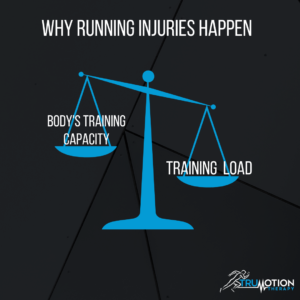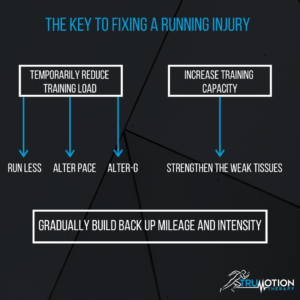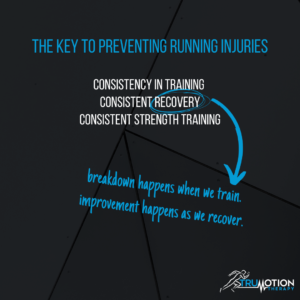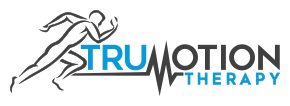April 11th, 2021
What causes running injuries?
Aside from slipping off a curb and spraining an ankle, most running injuries are caused by ‚Äútraining errors.‚Ä̬† Training errors happen when the stress of running exceeds our body‚Äôs ability to handle that stress.¬† We call the stress running places on the body ‚Äútraining load.‚Ä̬†
There are two main types of training load: external and internal.  External loads include how many miles you run, how fast you run, how frequently you run, and the type of terrain on which you run.  As you run more miles per week at a faster pace with fewer recovery days on hilly terrain your external training loads go up.  
Internal training loads are a bit less obvious and include things like sleep quality, hydration status, strength level, and previous injuries.  As your sleep quality, hydration status, and strength level go down your internal loads as you run go up.  Tack on any previous injuries and they go even higher.  
The combination of high external and internal training loads with a poor ability to handle those loads increases your likelihood of becoming injured.  

How do you fix a running injury?
To fix a running injury there needs to be a temporary reduction in training loads.  This usually means running less or not running at all.  Most runners don’t like this idea, but a small sacrifice in the short term will pay off in the long run (pun).  
Fortunately, some amount of running is usually tolerated just fine while rehabbing an injury, and it will be up to you and your doctor to help determine the sweet spot.  At TruMotion Therapy, our Alter-G Anti-Gravity allows people to continue training while injured by reducing impact forces. 
During the injury recovery period the injured tissues need to be strengthened so they can better handle the demands of running when you return.  When appropriate, your mileage will be gradually increased.  

Can you prevent running injuries?
While it‚Äôs impossible to truly prevent an injury, you can do things to stack the odds in your favor.¬† The main goal here is to keep the ‚Äúbody capacity‚ÄĚ and ‚Äútraining load‚ÄĚ balance from tilting too far.¬†¬†
- Train smart.¬† Train consistent.¬† The body does not like big fluctuations in training, like periods of time off followed by periods of intense high mileage.¬† If you’re increasing your weekly mileage, do so gradually.¬† If you have to take a couple weeks off for one reason or anther, build back up gradually.¬†¬†
- Recover.  Taking a recovery day or two can only help your training.  Running puts stress on the body and breaks down tissue.  Recovery heals the body and promotes the physiologic adaptations in our system we need to improve as runners.  
- Strength Train.  Strength training improves bone mineral density, strengthens tendons, and enhances neuromuscular function.  It’s a great way to protect yourself from injury and improve performance.   
- Take Care of the ‚ÄúLittle‚ÄĚ Things.¬† Hydration, nutrition, and sleep play a huge role in decreasing the internal load while running and increasing your body‚Äôs capacity to handle mileage.¬†¬†¬†

The topic of running injuries is vast.  This article hits the main points of that topic as it relates to training.  The subject of shoe selection and gait can be separate articles in themselves, but they do not account for as many injuries as do training errors.  
If you’re in the Charlotte area and are sidelined with a running injury, we’re here to help.  We combine modern chiropractic care, dry needling, functional movement, laser therapy, massage, and training advice to help you overcome injury and perform at your best.  
Click HERE to schedule an appointment online.





